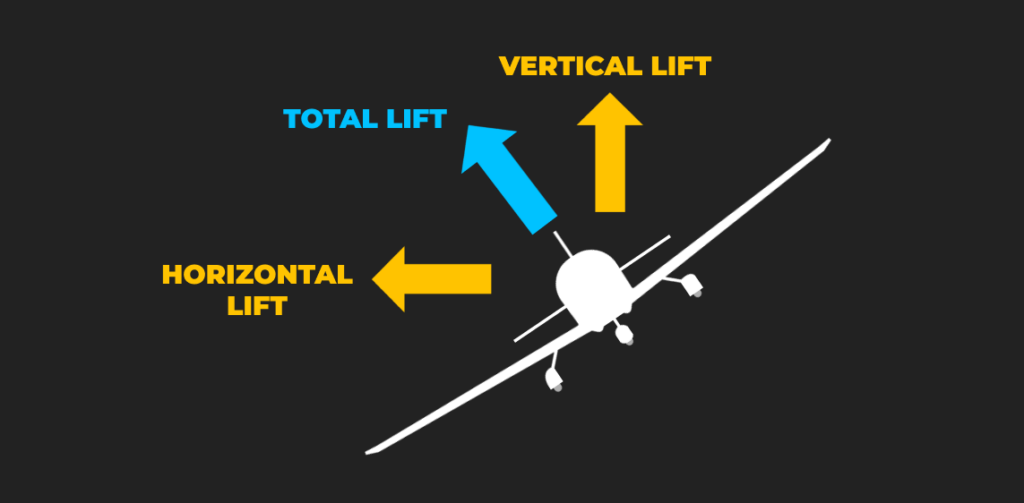If you’re learning to fly or just want to understand aircraft physics better, one term you’ll hear often is load factor. But what exactly is load factor in aviation, and why is it so important for safe flying? In this article, we’ll break it down in a simple way.
What is Load Factor?
The load factor is the ratio between the lift produced by the aircraft and its actual weight. It’s measured in G-forces (or simply “G”). When flying straight and level, the airplane experiences a load factor of 1G, which means the lift equals the aircraft’s weight.
However, during maneuvers like turns or pull-ups, the aircraft must generate more lift to stay at the same altitude. This extra lift creates a higher load factor, meaning the aircraft and everyone inside it feels heavier. For example, in a 60-degree banked turn, the load factor is about 2G. This means the aircraft’s structure supports twice its weight.

Lift Components in a Turn
When you bank the airplane to make a turn, the total lift vector tilts. Lift can be broken down into two components:
- Vertical component of lift: Keeps the aircraft at a constant altitude.
- Horizontal component of lift: Causes the aircraft to change direction (turn).
To maintain altitude during a turn, the vertical component must remain equal to the aircraft’s weight. Since part of the lift is now horizontal, the total lift must increase to compensate. This is why pilots have to pull back on the controls during a turn — to increase the angle of attack and generate more lift.

Centrifugal Force and Load
When an aircraft turns, centrifugal force comes into play. This is the force pushing the aircraft outward, away from the center of the turn. The aircraft must overcome both gravity and centrifugal force, which together create a new total force called the load. This total load increases the load factor.
The faster and tighter the turn, the greater the centrifugal force — and the higher the load factor.
Why Load Factor Matters
There are several reasons why understanding load factor in aviation is essential:
- Structural limits: Every aircraft has a maximum load factor it can safely handle. Exceeding this can cause structural damage or even failure.
- Stall speed increases: As load factor increases, so does the stall speed. The aircraft will stall at a higher speed during steep turns or abrupt maneuvers.
- Maneuvering speed (VA): Below this speed, the aircraft will stall before exceeding structural limits. Above it, excessive control input can cause damage.
Airspeed and Load Factor
Airspeed plays a big role in load factor. At higher speeds, turns create more centrifugal force, raising the load factor even with shallow banks. This means pilots need to be especially cautious when flying fast — sharp turns can quickly become dangerous.
Understanding load factor is essential for every pilot or aviation enthusiast. It explains how forces like lift, weight, and centrifugal force interact when an aircraft turns or changes direction. The more an aircraft banks or changes speed, the more lift is required to stay level, and that increases the load factor.
This matters because higher load factors put more stress on the aircraft’s structure and wings. If the aircraft exceeds its G-limit, it can suffer serious damage or even structural failure. Additionally, as the load factor increases, the stall speed also rises. This means that managing your speed and how you handle the aircraft is critical for safe flight.
Pilots need to be fully aware of their aircraft’s limitations, especially the maneuvering speed (VA) and maximum load factor as outlined in the flight manual. Understanding these values helps prevent accidental overstressing of the airframe.
By staying mindful of speed, bank angle, and control input, you can safely perform turns and maneuvers without putting unnecessary strain on the aircraft. Whether you’re flying a training aircraft or a jet, the same principles apply. When you understand how load factor works, you become a more confident and skilled pilot.